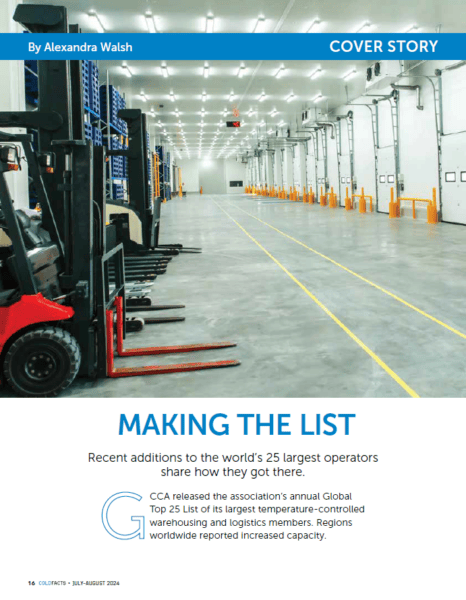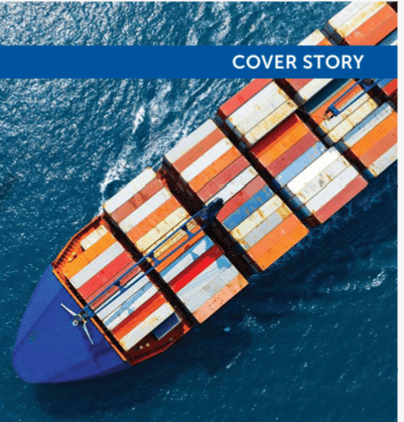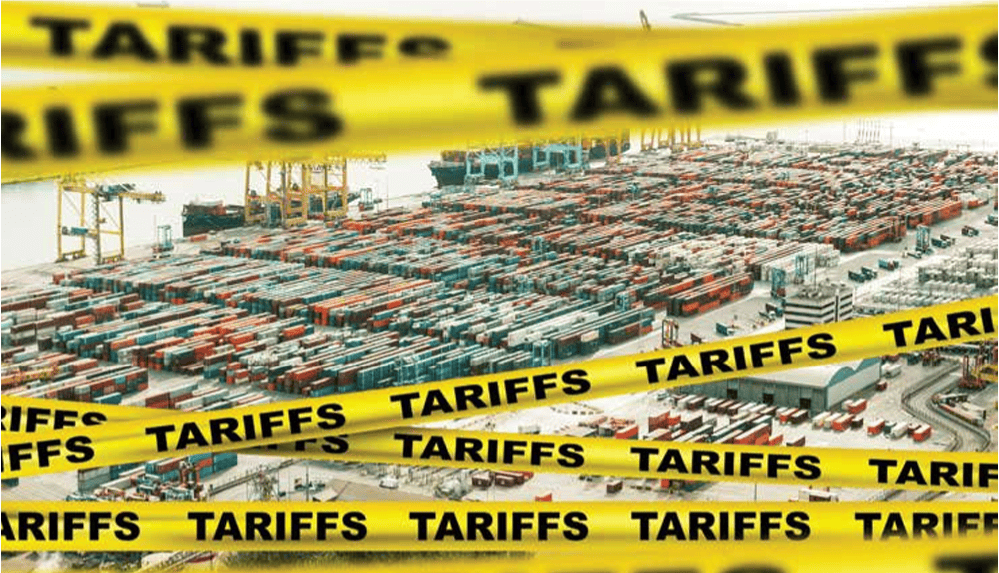From COLD FACTS Magazine (Click Image)
Read Below:
Making the List
Recent additions to the world’s 25 largest operators share how they got there.
By Alexandra Walsh
GCCA released the association’s annual Global Top 25 List of its largest temperature-controlled warehousing and logistics members. Regions worldwide reported increased capacity.
GCCA warehouse members currently own or operate 7.39 billion cubic feet (209 million cubic meters). A total capacity of more than 600 million cubic feet was added to the Global Top 25 List since last year due to mergers and acquisition (M&A) activity and the opening of new planned facilities. There is not a suggestion the general industry grew at this pace.
“We anticipated the uncertainty in 2023 would slow investments in the sector, but once again, the cold chain has proven to be resilient in the face of adversity,” says Adam Thocher, GCCA Senior Vice President, Global Programs and Insights. “GCCA members have continued to create and grow their networks around the world, both through acquisition and greenfield developments.”
Accompanying the Global Top 25 is the GCCA North American Top 25 Warehouse Member List as well as lists of the largest operators in Latin America and Europe. The lists are determined by total reported capacity of temperature-controlled space by the GCCA membership.
There are also several companies this year that are new on the Top 25 lists, and used different strategies to get there. Some companies grew in markets rife with mergers, acquisitions and consolidations, others targeted greenfield development in port markets, filled a market need for value added-services or attribute their growth to their talented teams.
Here are some of their stories.
Market Growth Dynamics
“Our rapid growth is driven by a market that is ripe for consolidation and customer demand for larger, well-capitalized players,” says Henry Pringle, COO of Constellation Cold Logistics, headquartered in the United Kingdom.
Pringle explains that currently, the European cold storage market is highly fragmented, with several founder-led smaller businesses. Often these smaller businesses can face capital constraints, limiting the ability to invest in expansion to support customers with growing storage needs, as well as limiting investment in modernization and new technology. This has led to a growing group of founder-led businesses considering potential exit or sale.
“Constellation began its journey in 2020 to consolidate leading local players into a pan-European provider of scale that had the ability to support the future needs of our customers across Europe,” says Pringle. “Our aim is to retain the local market expertise, empowerment and responsiveness, with the benefit of scale and best-practice capability of a pan- European provider.”
Turning three years old in August 2024, Emergent Cold LatAm focused on M&A in its first two years, acquiring 19 companies, building two new cold storage facilities, across 11 countries.
Unlike mature markets in the United States or Europe, Latin America still has significant room for growth in outsourcing services, explains Neal Rider, CEO and Co-founder of Emergent Cold LatAm.
In well-established markets, around 80% of products are handled by 3PL providers. In contrast, third-party companies manage only about 35% of the volume in Latin America. “This indicates immense growth potential with the sector’s development just beginning,” Rider says. “The shift towards more 3PL cold storage is starting here, echoing the transition in the United States and the European Union 20 years ago,” says Rider.
Despite these opportunities, doing business in Latin America presents many challenges that can affect the stability and predictability of logistics operations. “However, these challenges also present opportunities for innovation and investment in more resilient and efficient cold chain solutions,” says Rider. “Enhancing the overall efficiency and reliability of the supply chain in the region is key to unlocking its full potential.”
The growth in capacity for FreezPak Logistics is attributable to its strategic focus on developing a national platform that enables seamless product transportation between its facilities, according to FreezPak Co-founder and CEO Dave Saoud.
“The company emphasizes comprehensive service offerings, positioning itself as a one-stop shop for clients,” Saoud says. “By acting as a 4PL, FreezPak can efficiently manage and optimize customer logistics operations, driving growth through enhanced service capabilities and streamlined supply chain management.”
Headquartered in New Jersey in the United States, the majority of FreezPak Logistics’ growth has been achieved through greenfield development specifically targeting port markets. “By focusing on ground-up construction, FreezPak maintains its identity as a family-owned business driven by two brothers who have witnessed their father’s success in both wholesale and retail food businesses,” says Saoud. “Notably, our development company, Saoud Development, plays a pivotal role in making these expansions possible by designing facilities tailored to the operational needs of FreezPak Logistics.”
Rudy Sandoval, Senior Vice President, Business Development, Sales and Commercial at Envision Cold, headquartered in Georgia in the United States, attributes their growth to date to acquisitions and the teams they inherited. He says the company has successfully completed six acquisitions and continues to evaluate opportunities in markets it feels are underserved. In parallel, Envision Cold is also focused on expansions and greenfield developments to meet customer demands for new supply in certain markets, explains Sandoval.
“We have an incredible team (both local and centralized) that has laid the foundation for growth,” Sandoval says. “Through acquisitions, we have inherited a large number of talented individuals that have already been promoted throughout the organization, making us comfortable to continue growing.”
Invest in Tech
All four companies new to the Top 25 lists acknowledge the importance of investing in research and development of new technologies to be able to continue expanding capacity.
Sandoval notes investment in technology is one of Envision’s core strategies. “We feel that a fully integrated tech stack is fundamental to continuously improving customer service,” he says. “Our tech leaders are always looking for novel and cutting-edge solutions to not only expand our capabilities, but also meet the needs and demands of our customers.”
Pringle says, “At Constellation, we have been embracing and seeking out new technologies from construction materials, energy efficiency investments and warehouse equipment to robotization and IT. This ensures that we continue to be as efficient as possible.”
Emergent Cold LatAm’s growth strategy emphasizes transforming the cold chain in Latin America with a strong focus on energy efficiency and sustainability. “We aim to reduce energy consumption by at least 40% in new buildings and retrofit the acquired facilities,” says Rider. “We have EDGE Advanced-certified plants in Brazil, Chile, Ecuador, the Dominican Republic and Panama, and we are ambitiously working towards certification for other locations, including the adoption of solar energy in various of our existing locations and all the new builds.”
Rider notes beyond energy savings, the EDGE Advanced standards also mandate reductions in water consumption and carbon emissions in building materials. “Soon, we expect to unveil our first temperature-controlled food warehouse recognized as zero carbon,” he says.
Consumer Trends and Food Wastage
“We believe there are strong consumer and macroeconomic trends supporting demand for our services including an increased focus on nutrition, with the rise in fresh and frozen food, as well as imported food that travels long distances,” says Pringle. “Customers are also demanding larger varieties of food year-round, and a growing demand across retail and foodservice is providing further demand.”
Frozen foods have several benefits in reducing food wastage including both at the processing and distribution stage as well as on the consumer end, Pringle points out. “As both producers and consumers become more cost- and environmentally conscious, we see a shift towards frozen food further driving growth in demand for cold storage.”
Sandoval says while they fully recognize the continued growth and adaptation of e-commerce, it’s also important to note that this work doesn’t always necessarily require a large space. “Believe it or not, the majority of the e-commerce volume you see today is being processed through existing infrastructure that has been retrofitted.”
Sandoval points out that reducing food wastage could absolutely have an impact on the demand for storage facilities or propel market growth. “Reduction in waste could allow for distribution of more food to families in need, and incremental product flowing through the cold chain would drive the need for additional storage.”
“While reducing food wastage may contribute to increased demand for storage facilities, we believe that market growth will primarily be driven by our proactive efforts to expand our services and enhance our capabilities by focusing on innovation, efficiency and customer satisfaction,” says Saoud.
Growth Strategies, Challenges and Next Gen Cold Storage
“Constellation has a robust and ambitious growth plan in each region, we will continue to grow via M&A and expansion projects in existing and new geographies, and we have a strong pipeline to achieve this,” says Pringle.
Pringle adds in addition to expansion, the company will continue to invest in its existing facilities. “We see an increased focus on sustainability and net zero from both operators and their customers. As regulation and consumer pressure increases in this space, cold stores will be required to adapt and invest,” Pringle says. “Part of this can be addressed by energy efficiency, which can create significant cost savings for cold stores.”
Pringle says the company’s newest facilities are tailored to the local operation, ensuring maximum efficiency for the customer mix and commodity type in the market they serve. “This can mean anything from a fully automated high bay facility to a highly flexible conventional facility with some process automation,” he says. “They are built with the latest materials and refrigeration equipment for high performance and energy efficiency and include large solar arrays on the roof.”
Saoud is concerned about the industry trend in overbuilding, which he believes could lead to an imbalance of space if speculative development continues unchecked.
“New entrants may not grasp the importance of waiting for demand to catch up with supply and may face challenges when their platforms lack the maturity and experience of established operators,” Saoud says. “Speculative developers could struggle to lease facilities as operators assess actual demand – currently, I don’t see a need for additional space in certain markets where development has been rampant.”
Emergent Cold LatAm’s growth now will be mostly driven by the organic expansion of its existing facilities and through new cold stores, reports Rider. In May, the company inaugurated Chile’s largest cold storage facility and completed two expansions in Mexico. It is also working on nine other projects in Uruguay, Brazil, Chile, Guatemala, Peru, Mexico and Colombia, with three more in the pipeline.
Rider notes one of the company’s key challenges is sustaining its growth while accelerating the integration of its network.
“Integration goes beyond standardizing operations, systems and procedures; it ensures that our customers receive the same consistent, high-quality service at all our locations,” Rider says. “To achieve this, we have developed the Emergent Way, which includes an operating playbook and core principles designed to drive standardization, optimization and synergies across our 70-plus warehouses.”
Rider adds the initiative also involves implementing a unified, best-in-class enterprise resource planning software and warehouse management system.
“We have ambitious growth plans, but not at the expense of associate development or customer service,” says Sandoval. “Our goal, first and foremost, is to build a sustainable and respected business. As we feel comfortable, we will keep growing, opening up additional opportunities for both our associates and customers.”
Sandoval says from their customers’ perspective, they continuously hear investment in technology and operational flexibility. “There is a continuing need for operators to be more nimble, flexible and transparent, and we will do so through technology,” he says.
Sandoval suggests the company’s next generation cold storage space looks like increased storage density, semi-automated operations, more efficient power usage, use of artificial intelligence and technology to improve the customer experience.
Making the List
“Being included on the GCCA List of Top 25 Largest Companies, given that our platform is in its infancy, is a significant accomplishment for Envision Cold,” says Sandoval.
“Having commenced operations in 2020, Constellation has grown rapidly to now become the second largest provider in Europe and the only independent pan-European player of scale,” says Pringle. “We are grateful to our loyal customers in choosing to partner with us to support their growth, as well as our fantastic team in helping deliver a great service.”
“Being listed among the GCCA’s Top 25 Largest Companies, as the largest in Latin America and the sixth largest globally, is a testament to the execution of our talented team,” says Rider. “Emergent Cold LatAm’s more than 3,500 associates work tirelessly to provide our clients with the optimal solutions.”
“As founders who still retain 100% ownership, FreezPak Logistics on the List of Top 25 Largest Companies is a source of pride, and we view it as validation of our decision to patiently develop our platform over the years,” says Saoud. “As a family business, the recognition holds significant meaning, as it underscores our dedication, expertise and commitment to delivering exceptional service in the industry.”




